Source: Business News, AZ Business Magazine, Sept. 26, 2019
(NOTE: RESTORATION OF THE ARIZONA STATE PARKS HERITAGE FUND (Arizona 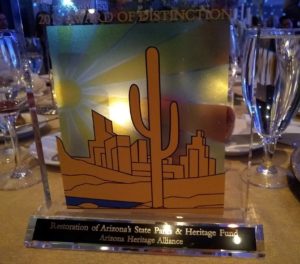 Heritage Alliance) received an AWARD OF DISTINCTION in the category: Healthy Communities, Parks and Trails which is listed almost at the end of this article. We are so proud of the work our partners, Senator Kate Brophy-McGee and Representative Joanne Osborne, did help restore the Heritage Fund. Thank you to everyone who supported our efforts in 2019.)
Heritage Alliance) received an AWARD OF DISTINCTION in the category: Healthy Communities, Parks and Trails which is listed almost at the end of this article. We are so proud of the work our partners, Senator Kate Brophy-McGee and Representative Joanne Osborne, did help restore the Heritage Fund. Thank you to everyone who supported our efforts in 2019.)
More than 650 business leaders, elected officials and their guests gathered together on Saturday, September 21, 2019 at the Arizona Biltmore Resort in anticipation to hear who the recipients would be for this year’s prestigious Arizona Forward Environmental Excellence Awards presented by SRP. A total of 93 projects were nominees in the private and public sector. The night also celebrated sustainability in Arizona and featured a special Arizona Forward 50th anniversary award.
The President’s Award, the top honor of all project submissions, was given to Mar 5 Gila River Indian Community Interpretative Trail. Governor Stephen Roe Lewis of the Gila River Indian Community was present to accept the award. A collaboration between the Gila River Indian Community, Pima-Maricopa Irrigation Project, Neil & Young Associates and Hunter Contracting Co., worked on the Managed Aquifer Recharge Site 5 (MAR 5) and Interpretive Trail giving Gila River Indian Community members a sustainable way to provide water for farming, materials for artisans to carry on their crafts, and educational classes to teach future generations after decades of being dried up land.
“I am beyond proud that the Gila River Indian Community was recognized as the recipient of the Arizona Forward President’s Award for our MAR 5 Gila River Interpretive Trail,” said Governor Lewis with the Gila River Indian Community. “It is an honor to have our Community recognized as a leader in Arizona for innovative water management and sustainability practices, as we are focused on addressing the ongoing drought and climate change.” Governor Lewis added, “My father, the late Rod Lewis, had a vision for the MAR 5 Interpretive Trail: ‘The MAR 5 Interpretive Trail will be a living tribute to our Water Rights, our Huhugam and teaching our future generations our historic and ongoing ties to the Gila River.’ ”
The Governor’s Award for Arizona’s Future was presented by Anni Foster, General Counsel for Governor Doug Ducey’s office. The Crescordia Award, the highest honor within each category, went to Arizona’s Drought Contingency Plan Process (DCP) and Committee Co-chairs. Tom Buschatzke, Director with the Arizona Department of Water Resources and Ted Cooke, General Manager with Central Arizona Project, worked together as DCP Committee Co-chairs and accepted the award. Nearly 40 stakeholder representatives served on the DCP Committee with a variety of perspectives. After months of collaboration and compromise, the DCP plan details how impacted stakeholders, including Arizona and other states, will adapt to reduced Colorado River water to secure water supplies for Arizona residents. The Plan is intended to last until 2026.
“The gala was a special evening and we were proud to honor some very important projects,” said Lori Singleton, president and CEO of Arizona Forward. “There were many project nominations related to water this year which shows how focused the Arizona community is on this vital resource. We were also pleased to honor our state universities, Arizona State University, Northern Arizona University and University of Arizona, with our 50thanniversary recognition. Arizona’s state universities have been our long-standing partners, and we look forward to making sustainability progress with them for Arizona in the future.”
A list of all the project nominations and a description summary for each can be found on arizonaforward.org. Projects were reviewed by a panel of 10 judges led by Grady Gammage Jr, one of the founders of Gammage and Burnham, a known community expert and author of the book, The Future of the Suburban City, Lessons from Sustaining Phoenix.
Recipients of the CRESCORDIA AWARD for the remaining categories are listed below.
RESTORING WATER TO THE DESERT (Intel Corporation) Category (private sector): Sustainability Champion
Intel Corporation has committed to restore 100% of the company’s global water use through collaborative projects that restore water to watersheds that benefit communities. The corporation has funded 10 projects in collaboration with nonprofits to support Arizona watersheds. Once completed, these projects will restore about 650 million gallons of water to the environment each year. The initiative addresses a critical environmental issue while balancing the need for jobs and economic development in the last 5 years and builds on the 13 billion gallons of water Intel has already returned to the Chandler Community from its operations.
SCOTTSDALE WATER (City of Scottsdale, Scottsdale Water) Category (public sector): Sustainability Champion
Water Sustainability through Stewardship, Innovation and People is Scottsdale Water’s vision and the defining statement of the organization. Scottsdale Water holds the Arizona’s second largest allocation of renewable hydropower generated from Hoover Dam, representing approximately 12.7 percent of the annual energy use at the Scottsdale Water Campus, Choose Tap! awareness campaign aims at increasing consumption of tap water as a safe, affordable alternative to bottled water. In three months of operation, the City’s water trailer has distributed 11,575 gallons of water, equivalent to 74,054 one-time use water bottles. And 20 bottle filling stations, which include an automated bottle-fill counter, have filled over 61,437 bottles.
SALT RIVER PIMA-MARICOPA COMMUNITY JUSTICE CENTER (Gould Evans) Category: Buildings and Structures, Civic
The Salt River Pima Maricopa-Indian Community Center (SRPMIC) is a tribal court and practitioners’ building located on 4.3 acres of Indian Community land. The justice center responds to an increased demand for a space dedicated to the Community and the judicial process. Redefining traditional judicial environments, while considering the natural landscape, was an essential goal for the tribal members and design team alike.
BAND BUILDING STEELE INDIAN SCHOOL PARK (City of Phoenix Parks and Recreation) Category: Buildings and Structures, Historic Preservation
On the National Register of Historic Places and just west of Memorial Hall, this project was a partnership with the City of Phoenix Parks Department the Native American Connections and the Phoenix Indian Center; and ensures that the history of Phoenix Indian School and the story of its many students and families will never be forgotten. The 6,000 square foot space was transformed from the former Phoenix Indian School campus into a space for education and reflection. The new space is intended to help educate people unfamiliar with what the park used to be.
THE BOB AND RENEE PARSONS LEADERSHIP CENTER FOR GIRLS AND WOMEN AT CAMP SOUTH MOUNTAIN (Marlene Imirzian & Associates Architects) Category: Buildings and Structures, Commercial & Institutional
Located on a s site at the edge of the City of Phoenix South Mountain Park, the vision for the camp was for an urban program center, with camp appeal, built for girls but suitable for adult use with comfortable overnight facilities and large gathering space. The project reflects the values of the Girl Scouts, a supportive place for girls to develop skills and foster community, and an example of sustainable desert development
MAR 5 & GILA RIVER INTERPRETIVE TRAIL (Hunter Contracting Co.) Category: Site Development and Landscape, Landscapes and Preserves
Definition of the Project and its Purpose Managed Aquifer Recharge Site 5 (MAR 5) Interpretive Trail gives Gila River Indian Community members a sustainable way to provide water for farming, materials for artisans to carry on their crafts, and classes to teach future generations not only about their heritage but also how to carry on the farming and artisan traditions. The aquifer will be a source of water for farming irrigation to provide agricultural products throughout the world bringing revenue back into the state’s economy.
LOWER SALT RIVER RIPARIAN RESTORATION PROJECT (National Forest Foundation) Category: Site Development and Landscape, Landscapes and Preserves
The Salt River is a major artery for city water supplies, and on the Tonto National Forest, the Lower Salt River Recreation Area boasts a well-loved destination spot for thousands of visitors each year. Yet the health of the River has degraded over the last several decades. The purpose of this project is to restore an 11-mile stretch of the Lower Salt River by removing exotic plant species, planting over 500,000 native plants, and developing educational and volunteer opportunities.
SUSTAINABLE ACTION PLAN FOR COUNTY OPERATIONS (Pima County Government) Category: Healthy Communities, Public Policy/Plans
Equipped with ambitious objectives, measurable targets and easily integrated actions, the Plan’s purpose is to address the climate challenges of today. The Plan is an expansive and multi-faceted initiative, covering nine different sustainability focus areas In its FY2014-2018 Plan alone, the County avoided more than 64,000 MtCO2e emissions; installed more than 6 MW of renewable energy; added 42 fully-electric vehicles; decreased the number of tobacco users by more than 40 percent; established or maintained nearly a thousand acres of natural habitat with County renewable water, and more.
7TH AVENUE STREETSCAPE (Canary, a Gould Evans Studio) Category: Art in Public Places
The 7th Avenue Streetscape is a rotating public art exhibition comprised of six large existing panels that regularly feature local Phoenix artwork. The narratives focus on sustainability to increase public awareness for reuse, recycling and social consciousness. The resulting exhibit creates an urban gallery with commentary on sustainability through race, climate and the local environment. Poem selection and design process were made in collaboration with Poet Laureate Rosemarie Dombrowski, City of Phoenix Office Arts and Culture and the Public Works department
ARIZONA WATER WATCH (Arizona Department of Environmental Quality) Category: Technology Innovation
Arizona Water Watch (AWW), offers Arizona residents and visitors the opportunity to help monitor and protect Arizona’s waters. This program facilitates collaboration between the Department’s scientists, local entities, and the public to gather the information that is used to update flow patterns, address water quality issues and identify waters for future study. The program applies innovative ideas through multilevel volunteer opportunities ranging from sending information and photos through a mobile app to collecting weekly water samples. It has consolidated answers from over 15,000 questions and 1800 photos submitted through the mobile app and produced outstanding results.
2019 TEN ACROSS WATER SUMMIT (University City Exchange at Arizona State University) Category: Environmental Education & Communication
The US Interstate 10 corridor provides the most compelling window on the future of the country, one which presents the challenges of the 21st century in the highest relief. This singular transect strings together many of the most pressing societal, economic, urban and environmental topics of our time. A project spanning the entire continent, Ten Across engages this region as a living laboratory for resilience and innovation. March 26-28, 2019, Ten Across participants traveled from across the country to join the second annual 10X Water Summit (10XW2) in Phoenix, Arizona southwestern region to navigate safely into the known future. Takeaways from this Phoenix driven summit markedly shape the work and direction of 10X as the project travels to Houston for 10XW3 in 2020.
CITY OF MESA HOUSEHOLD HAZARDOUS MATERIALS FACILITY (City of Mesa) Category: Waste Reduction
City of Mesa’s Household Hazardous Materials Facility collects items such as cleaners, automotive fluids, pool chemicals, tires, and appliances to keep materials from contaminating the environment, landfills, wastewater treatment plants, and solid waste vehicles. Approximately 30 percent of all materials collected for disposal are in good enough condition to be reused and are placed into the “Swap Shop”, where Mesa residents can shop for free. The City also partnered with B&B Appliances to ensure good condition appliances are repaired and resold instead of going to scrap, and they have a robust latex paint remixing program and made significant donations to organizations in need. About 350,000 pounds of materials were collected in the first six months of operation.
The following project FINALISTS received an AWARD OF DISTINCTION :
SOUTHWEST WINE CENTER (Yavapai College) Category: Governor’s Award for Arizona’s Future
THE FUTURE IS WHAT WE MAKE IT (Honeywell International, Inc.) Category: Sustainability Champion
ON SEMICONDUCTOR TOP NOTCH RECLAMATION CENTER (ON Semiconductor) Category: Sustainability Champion
DESIGN EMPOWERMENT PHX (The Sagrado) Category: Environmental Education & Communication
ODOR CONTROL STATION 72 ARTS AND IMPROVEMENTS (City of Phoenix Water Services Department) Category: Art in Public Places
VALLEY METRO PUBLIC ART PROGRAM FOR GILBERT ROAD EXTENSION (Valley Metro) Category: Art in Public Places
MARICOPA TRAIL (Maricopa County & Recreation Department) Category: Healthy Communities, Parks and Trails
RESTORATION OF THE ARIZONA STATE PARKS HERITAGE FUND (Arizona Heritage Alliance) Category: Healthy Communities, Parks and Trails
FLAGSTAFF CLIMATE ACTION & ADAPTATION PLAN (City of Flagstaff) Category: Healthy Communities, Public Policy/Plans
SUSTAINABLE TOURISM PLAN (Sedona Chamber of Commerce & Tourism Bureau) Category: Healthy Communities, Public Policy/Plans
WASHINGTON PARK (Arizona Trail Association) Category: Site Development and Landscape, Landscape and Preserves
THE UNIVERSITY OF ARIZONA ENVIRONMENT & NATURAL RESOURCES 2 (ENR 2) (Colwell Shelor Landscape Architecture) Category: Site Development and Landscape, Landscape and Preserves
SANTA CRUZ RIVER HERITAGE PROJECT (City of Tucson Water Department) Category: Site Development and Landscape, Landscape and Preserves
XERO STUDIO (Studio Ma) Category: Buildings and Structures, Commercial & Institutional
SAN LUIS 1 PORT OF ENTRY, NORTH ANNEX BUILDING (Jone Studio, Inc.) Category: Buildings and Structures, Civic
SMART PROGRAM (City of Tempe) Category: Waste Reduction

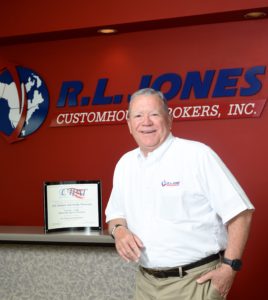
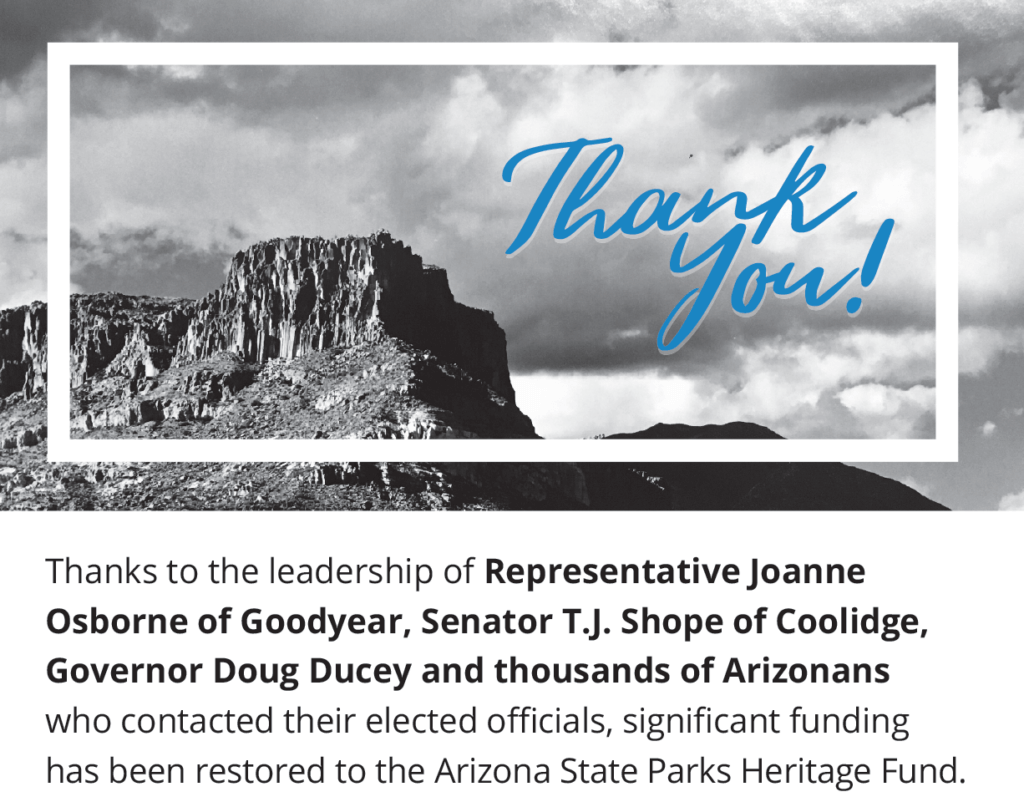
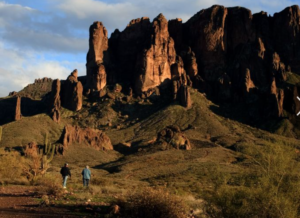
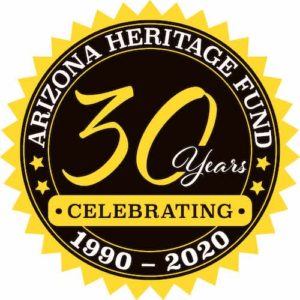

You must be logged in to post a comment.